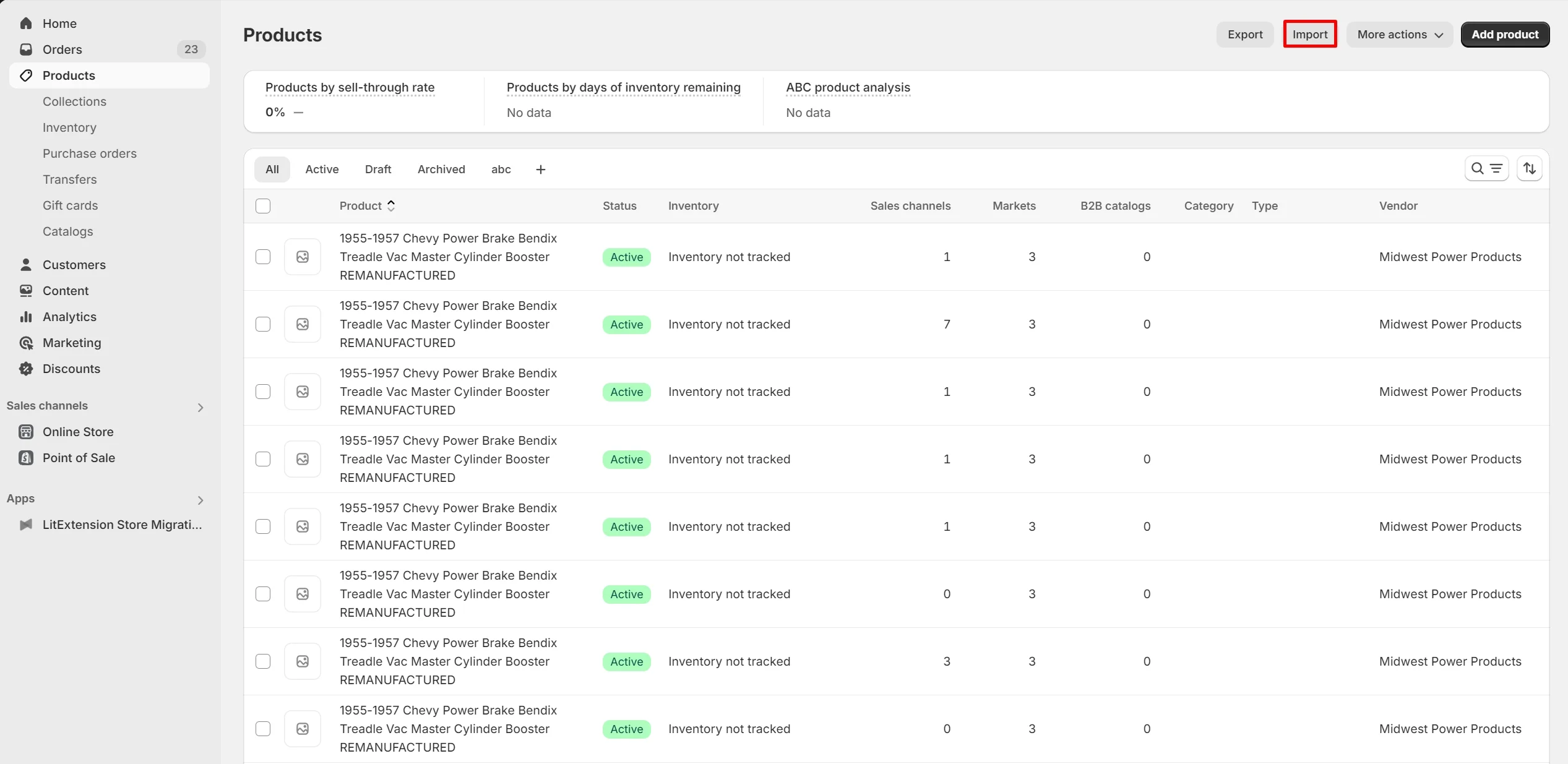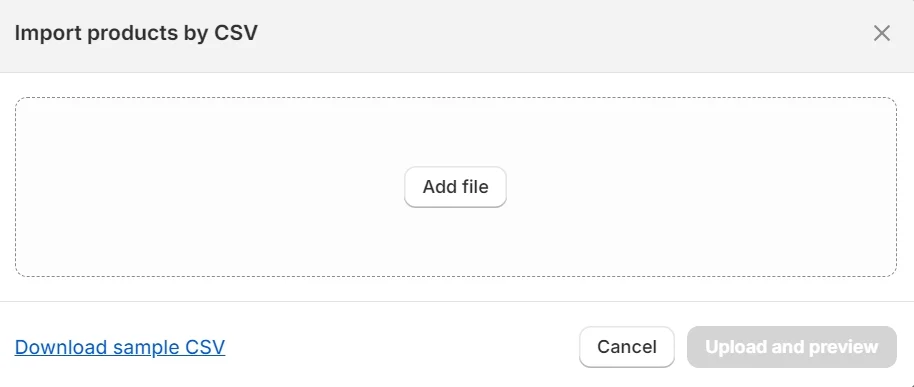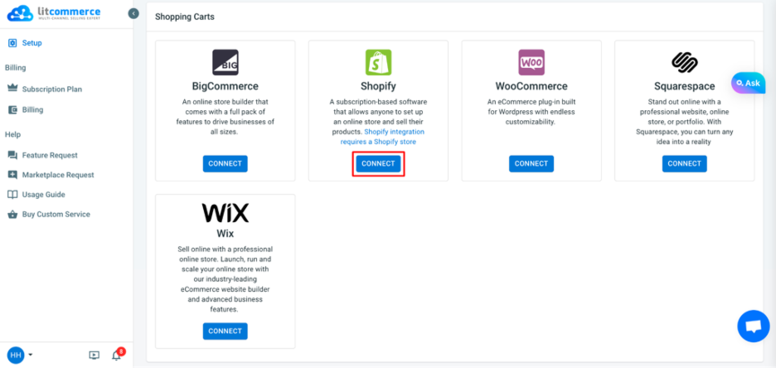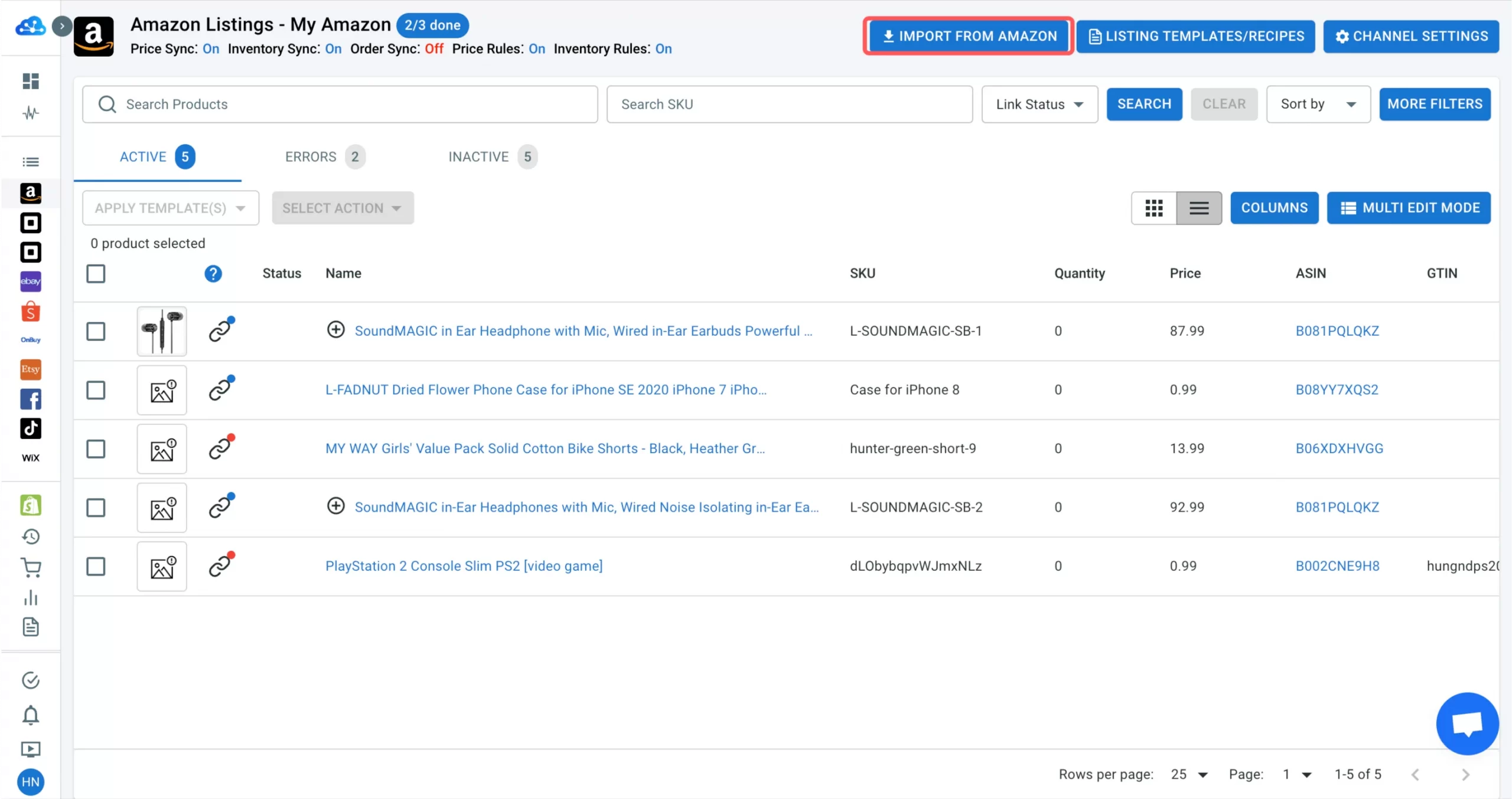Currently on Amazon but want to expand your business to Shopify? If that's your case, learning to import products from Amazon to Shopify is crucial for your business growth. This work might seem complicated at first, but our guide today will help you sail through the Amazon to Shopify importing process.
Keep reading to discover three main methods to import Amazon products to Shopify, including:
- Method 1. Import using CSV files
- Method 2. Migrate products from Amazon to Shopify with LitExtension
- Method 3. Integrate Amazon with Shopify via an app
- Best app to import products from Amazon to Shopify
Method 1. Import Products from Amazon to Shopify Using CSV Files
Step 1. Export your products from Amazon
- Navigate to your Amazon account, then click “☰” > “Reports” > “Inventory reports”.
- Choose “Report type” > “Active Listings Report”. At this stage, you can click “Customize the columns in this report” if you want to change the information generated in your CSV file.

- After that, click “Request report”, and wait for the report to be generated.
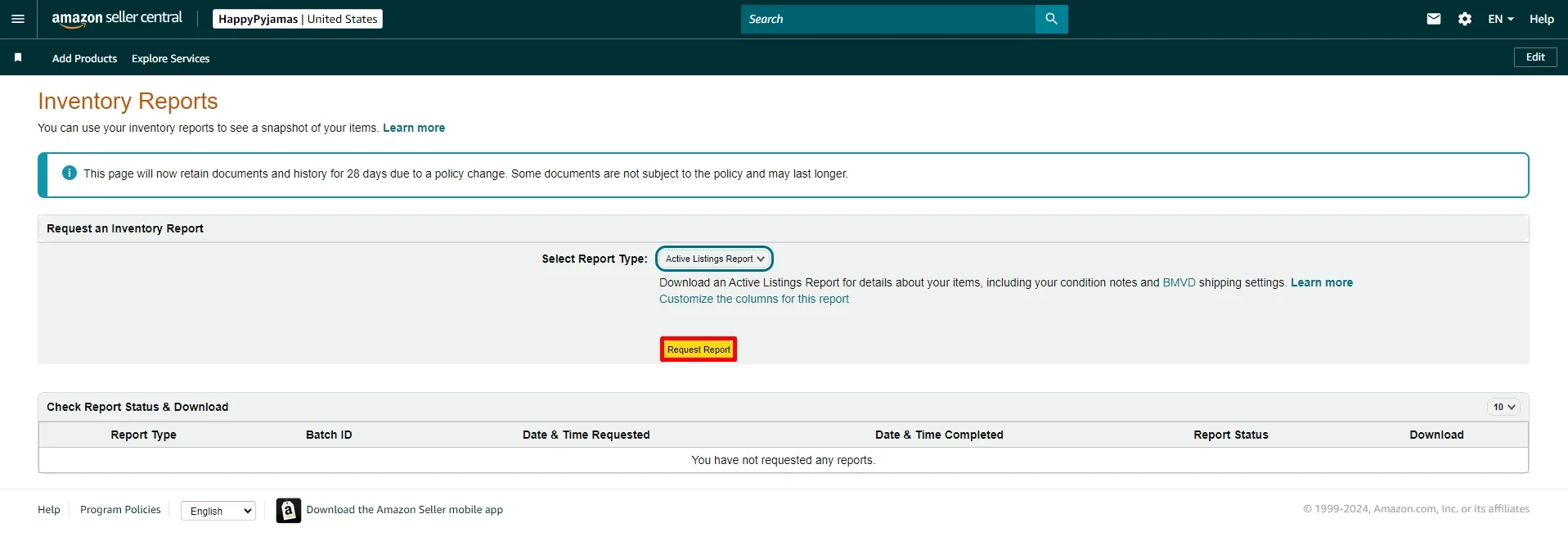
- Finally, click “Download” and save it to your computer.
Step 2. Customize your Amazon CSV file
Now that your data is fully exported into a CSV file, the work is not done yet. To import products from Amazon to Shopify, you'll need to customize your file first to make sure it's compatible with Shopify. We highly recommend you download the Shopify CSV template for the product and modify your data based on that.
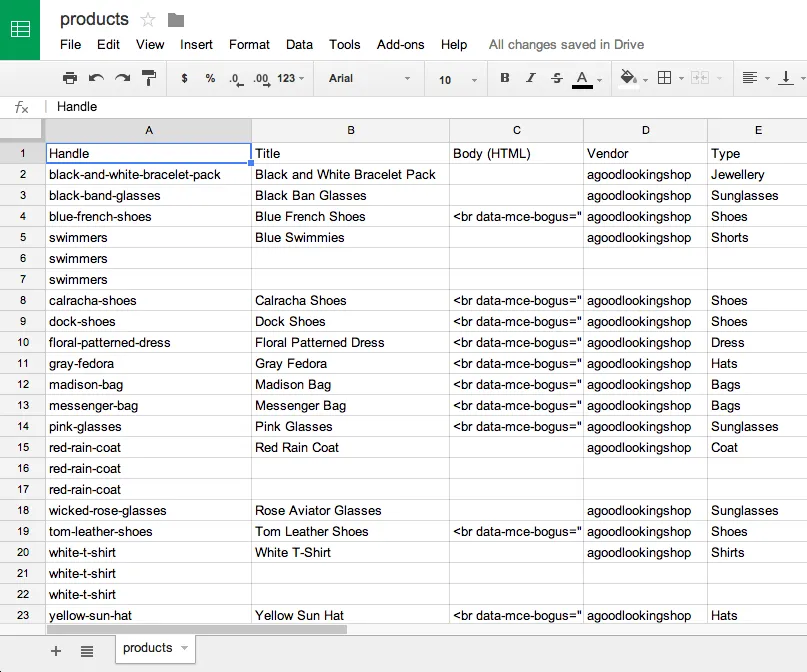
Here are some important details that you need to pay attention to when customizing and mapping data.
- You can edit your file using any spreadsheet program of your choice (for example, Google Sheets, Microsoft Excel, Numbers,…). You can add more rows for each new product but do not insert new, move, or delete any column to avoid errors later on.
- If you edit the sample Shopify CSV file to make it yours, be sure to delete all sample items.
- If you have multiple stores and want to import inventory quantities, please use the Shopify inventory CSV file.
- Review the table below to map your data accordingly.
Step 3. Import products from Amazon to Shopify
- From your Shopify Admin dashboard, choose the “Product” tab, then click “Import”.
- After that, click “Add file” and choose your product CSV file. Next, deselect the “Publish new products to all sales channels” and click “Upload and preview”
- Review the details about the import, and then click “Import products”.
To learn more about this process, please check out our detailed guide on How to import products to Shopify or watch the video tutorial below.
Method 2. Migrate Amazon to Shopify With LitExtension
As you may see, Shopify and Amazon have unique ways to store their data due to the differences in infrastructure of each platform. Therefore, though manually import products from Amazon to Shopify might be cost-saving, it requires an extensive level of technical expertise and lots of time dedicated to customizing your data.
If you want to save manual time and effort putting into this process, LitExtension – #1 eCommerce Migration Service can certainly be your companion. With over a decade in the eCommerce industry, we commit to providing a personalized migration experience that can cater to all your requirements. There's no need to manually modify your data because LitExtension will handle the full migration for you.
To migrate from Amazon to Shopify, you'll need to follow these 7 steps.
Step 1. Schedule a meeting with LitExtension
Migrating your precious data might seem daunting, but it doesn't have to be a stressful solo mission. Here at LitExtension, we believe in a personalized approach. That's why we want to provide a free consultation session with our migration experts to best understand your requirements for the Amazon to Shopify Migration.
At this step, you'll need to share your contact information and choose a convenient time to schedule a call. Make sure to book this session at least 2 hours in advance so that we can be fully prepared and address your needs better.
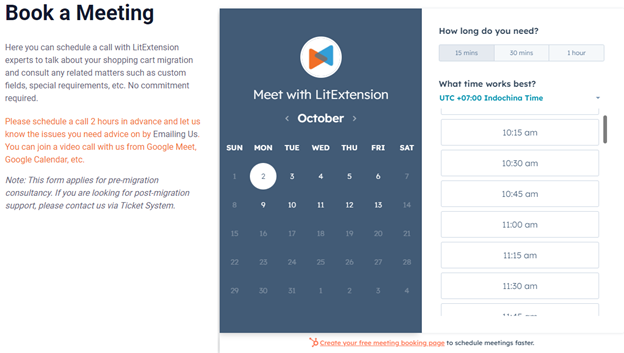
Step 2. Confirm your requirements and sign the SLA
Once you've had a chance to chat with our experts and explore your migration needs, it's time to make it official! Step two involves confirming all the details of your migration project and signing a Service Level Agreement (SLA). This will be the roadmap for your migration journey, outlining the scope of the project, including what data will be migrated, the source and target platforms involved, and the agreed-upon timeline.
This important step ensures we're both on the same page about your requests, defines our responsibilities, and sets clear expectations.
Step 3. Have your data configured by experts
Now that all your visions and timelines are fully mapped out, it's time to sit back and let the experts take the wheel. Step three is where the magic happens behind the scenes: our dedicated team will handle all the technical configuration for your migration. This means no more stressing over complex settings, database configurations, or tedious field mapping because we've got it covered!
Our experienced technicians will meticulously set up the entire migration process, following the blueprint laid out in your personalized plan. We'll establish a secure connection between your source and target platforms, employing the highest security standards to ensure your valuable data remains safe and sound throughout the importing process.
Step 4. Review the demo migration result
We're getting close to the finish line, but before we officially make the big move, it's time for a sneak preview of the demo migration result! This will be a vital checkpoint for you to provide feedback and request any final adjustments before we initiate the full Amazon to Shopify migration.
Step 5. Wait for us to import products from Amazon to Shopify
Once you confirm that everything is correctly set and aligned with your requirements, LitExtension specialists will then conduct the importing process for you. We will keep a close eyes on your migration and resolve any problems that occurs during the process. This way, we can guarantee to deliver an error-free migration from Amazon to Shopify.
Method 3. Import Products from Amazon to Shopify via An App
In many cases, importing products from Amazon to Shopify doesn't mean you have to migrate your store entirely. You can choose to integrate Amazon with Shopify and sync your products to sell on both channels. This way, you can significantly increase your customer base and generate more sales.
In the scope of this guide, we'll take the LitCommerce app as an example.
Step 1. Connect Amazon to Shopify
- First, sign in to the LitCommerce app. Then, from the LitCommerce dashboard, select “Setup” and choose “Connect” under Shopify.
- Next, fill in your store URL and the Shopify API password.
- Finally, select Amazon as your first sales channel by clicking “Connect” under Amazon.
Step 2. Import products from Amazon to Shopify
- From the left sidebar menu, select Amazon channel, then choose “Import from Amazon”.
- Then, check the linking status of each listing. If the dot is blue, your products are linked. But if it's red, it indicates that your listing isn't linked to any product.
Step 3. List Shopify and Amazon products
At this stage, LitCommerce provides two main methods to list products from Amazon to Shopify. You can choose either one based on your needs and preferences:
- Single Mode: Edit your listing individually with 4 tabs Product Identifiers, Vital Info, Pricing, and Offer.
- Multi-edit Mode (or QuickGrid): Bulk edit your listings from multiple channels using a spreadsheet-styled interface.
For a detailed guideline to import products from Amazon to Shopify, please check out this Shopify Amazon integration guideline.
Best Amazon Shopify Integration Apps
LitCommerce
LitCommerce offers a straightforward solution for integrating your Shopify store with Amazon. This multichannel selling tool streamlines your eCommerce operations by providing a centralized platform for managing product listings, inventory, and orders across both platforms. With LitCommerce, you can say goodbye to manual data entry and reduce the risk of errors, freeing up your time for other important aspects of your business.
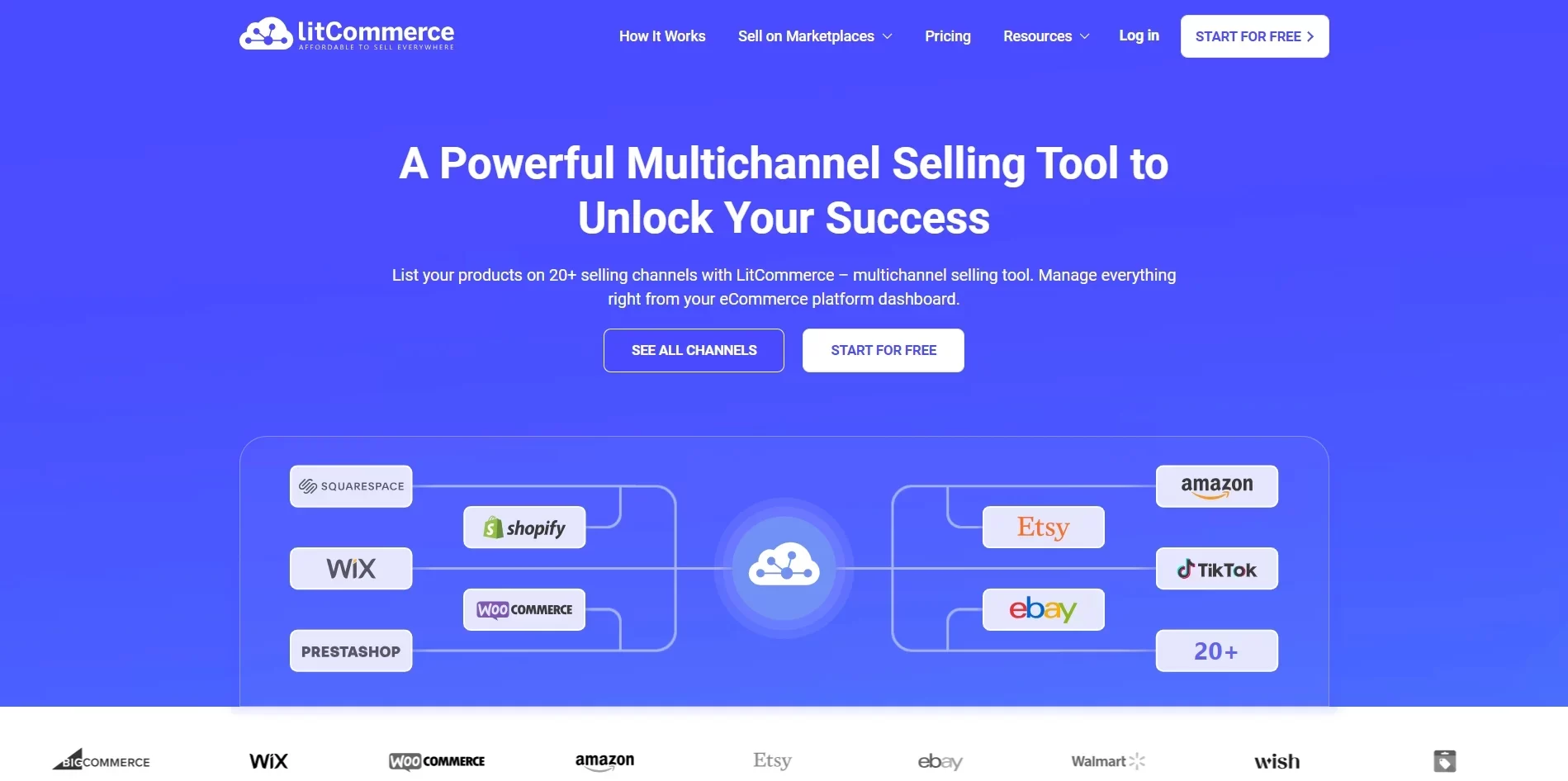
Here are some of LitCommerce's key features:
- Centralized inventory management: Manage and sync inventory levels across Shopify and Amazon, avoiding overselling and stockouts.
- Bulk product listing: Effortlessly list and edit products on Amazon directly from your Shopify dashboard.
- Automated order fulfillment: Route orders from Amazon to Shopify for a streamlined and efficient fulfillment workflow.
- Smart pricing rules: Configure dynamic pricing rules to stay competitive on Amazon while maintaining healthy profit margins.
- Multi-account connection: Connect multiple Shopify and Amazon accounts to manage all your sales channels in one place.
- Dedicated customer support: Get reliable and responsive support from the LitCommerce team whenever you need it.
LitCommerce pricing: Dynamic pricing structure based on your number of channels and listings.
CedCommerce
CedCommerce provides a comprehensive suite of tools designed to simplify and optimize selling on Amazon through your Shopify store. This app acts as a centralized hub for managing product listings, synchronizing inventory, and streamlining order fulfillment across both platforms. With a focus on automation and user-friendliness, CedCommerce empowers merchants to scale their businesses and maximize their reach.
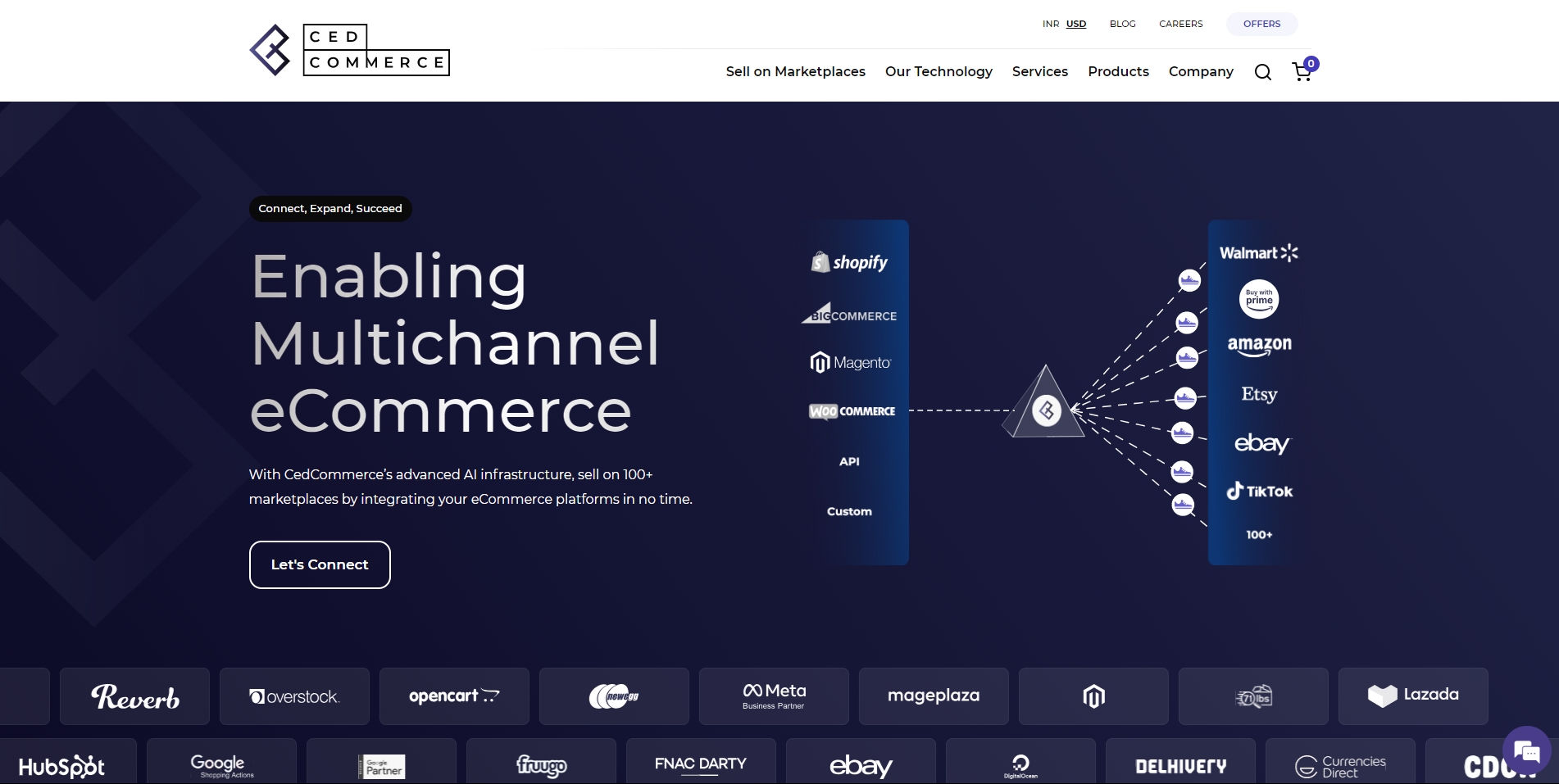
Here are some notable features that CedCommerce offers:
- Automated product listing: Publish and manage your Shopify products on Amazon effortlessly with automated listing creation and updates.
- Real-time inventory synchronization: Prevent overselling and maintain accurate stock levels with real-time inventory updates between your Shopify store and Amazon listings.
- Simplified order management: Manage your Amazon orders directly from your Shopify dashboard, consolidating order fulfillment and tracking processes.
- Product category mapping: Accurately map your products to the correct Amazon categories for improved visibility and discoverability.
- 24/7 customer support: Access round-the-clock support from the CedCommerce team to answer your questions and provide technical assistance.
- Plan customization: Choose from various pricing plans tailored to different business needs and scale as your sales volume grows.
CedCommerce pricing:
- Regular plans: From $19 to $129 per month
- Business plans: From $99 to $500+ per month
AutoDS
AutoDS presents a comprehensive dropshipping automation solution, bridging the gap between your Shopify store and the vast Amazon marketplace. This powerful platform simplifies every step of your dropshipping journey, from sourcing winning products to managing inventory and automating orders. With AutoDS, you can efficiently scale your dropshipping business and increase your sales potential.
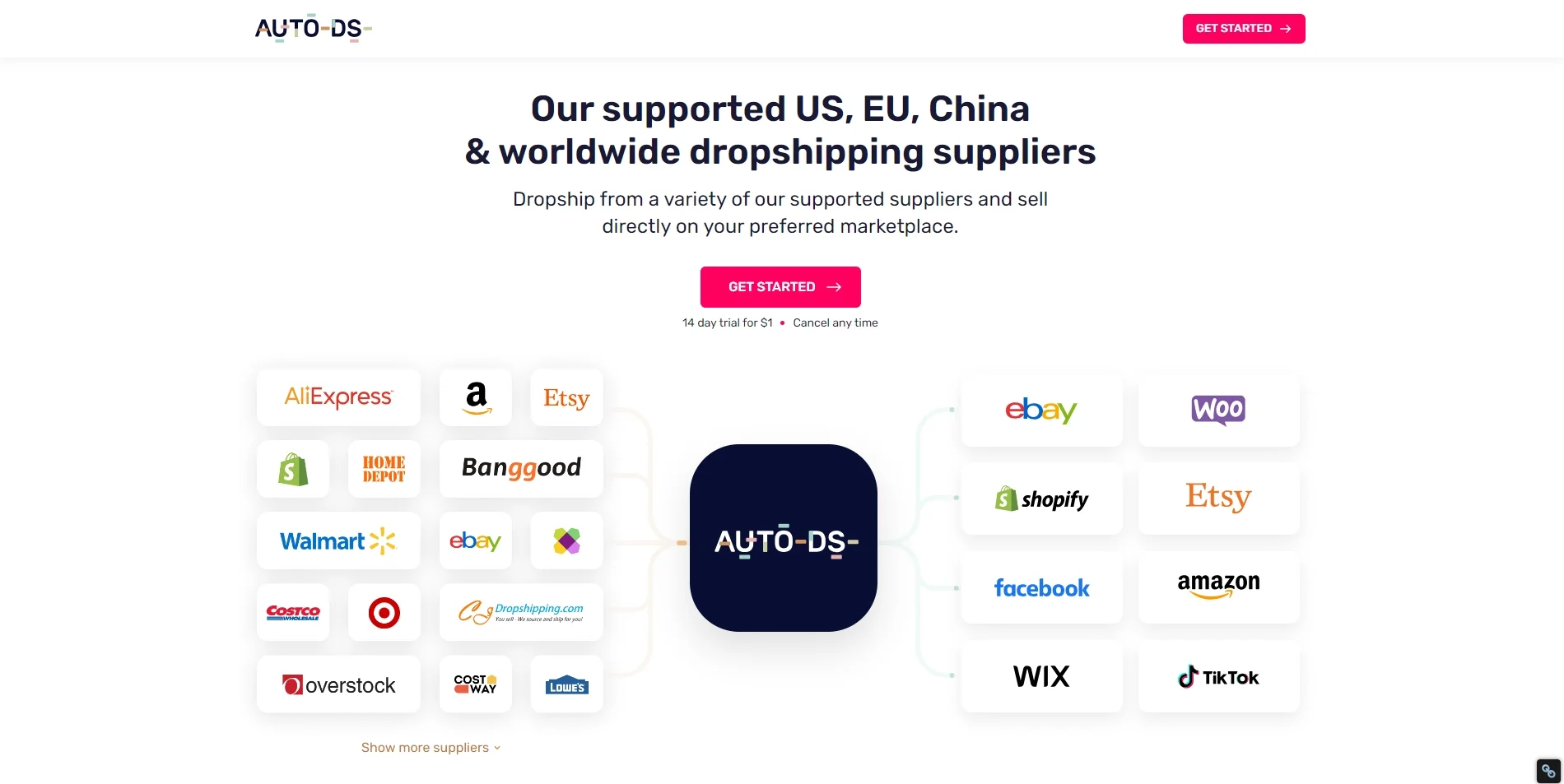
- Automated product sourcing and importing: Easily discover and import products from a vast network of reputable suppliers, adding them seamlessly to both your Shopify store and Amazon listings.
- Effortless bulk listing: Create and upload numerous product listings to Amazon quickly and efficiently, complete with optimized titles, descriptions, and images.
- Real-time price and stock synchronization: Avoid selling out-of-stock items and maintain competitive pricing with automated price and inventory updates from your suppliers.
- Automated order fulfillment: Streamline your fulfillment process with one-click order placement to your dropshipping suppliers, minimizing manual tasks.
- Advanced analytics and reporting: Track your sales, profits, and other crucial metrics with detailed analytics dashboards, allowing you to make data-informed decisions.
- Customizable pricing and profit optimization: Set pricing rules and automate price adjustments to ensure healthy profit margins on all your sales.
AutoDS pricing: From $19.90 to $54.90 per month
Import Products from Amazon to Shopify – FAQs
How do I import Amazon products to Shopify?
You can import products from Amazon to Shopify using 3 methods:
- Using a CSV files
- Migrate products from Amazon to Shopify with LitExtension
- Integrate Amazon with Shopify via an app
Can you sell products from Amazon on Shopify?
Yes, you can sell products sourced from Amazon on your Shopify store. Nonetheless, this process cannot be perform directly, you'll need to integrate your Amazon with Shopify to sell on both platforms effectively.
How do I link Amazon products to my Shopify store?
You cannot directly link Amazon products to your Shopify store to create a live, clickable link. If you want to sell the same products on both platforms, you need to create separate product listings on your Shopify store, either manually or by using an integration app to import product information.
Final Thoughts
In conclusion, importing products from Amazon to Shopify is a crucial consideration if you want to expand your sales channels. This process can be easily done using 3 methods: Manually importing products using a CSV file, migrating products from Amazon to Shopify with LitExtension, or utilizing a third-party app for importing. Besides Amazon to Shopify, you can find out more Shopify Migration Services at LitExtension.
If you like this article, don't forget to check out other Shopify blogs on our website for more expert insights and in-depth reviews.

